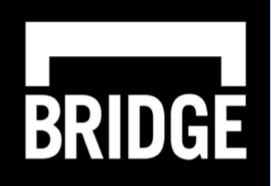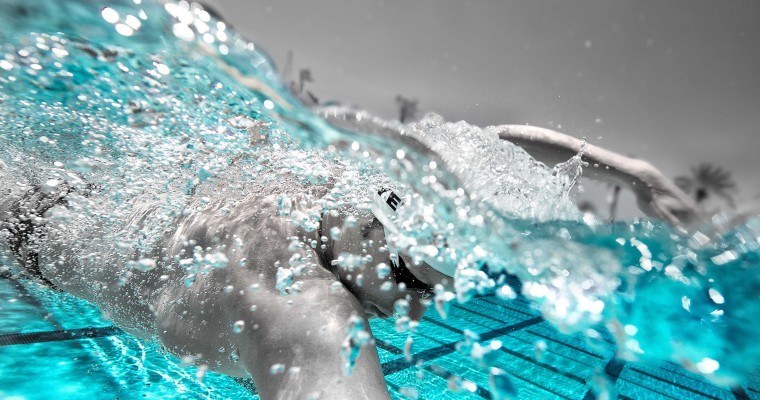All swimmers can benefit from improving their breath control—whether it helps you hold your head down in the final meters of a race or it enables you to go further underwater off each wall. In conjunction with building your endurance and speed, increasing your lung capacity is an important part of training for peak performance. Let’s discuss three ways to have better breath control.
1. Discipline on Underwater Sets
Integrate more underwater sets into your weekly training. Especially useful for sprint and middle distance swimmers, underwater sets only help you if you complete them with integrity. These sets will be mentally and physically challenging, but your lung capacity will not improve if you do not push the distance underwater. Try sets with a limited number of breaths per 50 or 100, and decrease that number as you get better with these workouts. 25-yard (or 25-meter in long course) “shooters” are a great way to practice holding your breath at race pace because the entire lap is sprint underwater dolphin kick. Breastrokers can achieve the same increase in lung capacity by doing these sets with consecutive underwater pulldowns.
2. Lungbuster Sets
All swimmers can benefit from lungbuster sets. Start with pulling sets that have breathing patterns like every 5th, 7th, or 9th stroke. Then move to sets that more closely simulate the racing environment. The hardest time to hold one’s breath will be when the race gets tough in the second half. On days where the training focus is quality (high intensity sets with more rest), play around with your breath control in the middle of a race pace effort. For example, try sets with 4 fast efforts (distance varies on specialty but let’s say 100s for sprinters, 200s and 300s for middle and distance swimmers respectively). During the fast effort, practice breath control in areas of the race that are typically difficult. Try 15-meter underwaters on the 3rd 50 of the 200s, or holding your breath on the last lap of the 100s. This will improve your lung capacity by challenging your body when it is already tired. Everyone can hold their breath on the first lap, but training to stay disciplined in the second half of the race is where it will help you the most. Often, these sets will not exactly approximate your races (you wouldn’t necessarily forego all oxygen on the last 25 of a 200) but they will build up your capacity to keep your head down longer.
3. Snorkel Tricks and Stretch Cords
This tip is not for everyone, can be extremely challenging. It is designed for elite high school, collegiate and masters swimmers who have a strong baseline (for lung capacity) with breath control work. Tape over the top of a snorkel and then poke a hole in it with a pen or other tool. Widen the opening to a desired size—smaller than a dime but larger than the width of a pen. Use the snorkel on pulling sets at first and breath steadily through it. This will greatly minimize the air coming in and out, so you will have to exercise great control over your breathing. As an added challenge, leave the snorkel on while resting on the wall between each swim to get used to the limited air supply. Another trick is to use stretch cords during breath control sets. Attach the belt around your waist and the other end to the block. Swim or kick underwater against the resistance fast. Have your coach blow a whistle when the time is up or take a particular number of kicks or strokes off the wall without breathing. For example, you can try a set of 4x 15-second efforts underwater with 10 seconds rest in between. The added resistance will cause your muscle oxygen levels to deplete quickly and will challenge your lung capacity in a shorter amount of yardage.
Adding some lung capacity training into your practices each week can greatly improve your breath control. The tips listed above are designed to simulate the physical challenge that will arise when the race gets tough. Master these training techniques to finish your races stronger than anyone in the pool.
 BridgeAthletic works with elite professional, collegiate, and club swimming programs to provide a turnkey solution for dryland training. Led by Nick Folker, the top swimming strength and conditioning coach in the world, our team builds stroke-specific, custom-optimized dryland programs for each of our clients. The individualized workouts are delivered directly to athletes via our state of the art technology platform and mobile applications. Check Nick and BridgeAthletic out as recently featured in SwimSwam.
BridgeAthletic works with elite professional, collegiate, and club swimming programs to provide a turnkey solution for dryland training. Led by Nick Folker, the top swimming strength and conditioning coach in the world, our team builds stroke-specific, custom-optimized dryland programs for each of our clients. The individualized workouts are delivered directly to athletes via our state of the art technology platform and mobile applications. Check Nick and BridgeAthletic out as recently featured in SwimSwam.
 Nick Folker is the Co-Founder and Director of Elite Performance at BridgeAthletic. Nick’s roster of athletes includes 35 Olympians winning 22 Olympic Medals, 7 team NCAA Championships and over 170 individual and relay NCAA championships. Megan Fischer-Colbrie works as the Sports Science Editor at BridgeAthletic. Megan was a four-year varsity swimmer at Stanford, where she recently graduated with a degree in Human Biology. The Championship Series by BridgeAthletic is designed to empower athletes with tips from the pros that will help them reach peak performance come race day. We will be covering competition-focused topics such as nutrition, recovery, stretching, and mental preparation.
Nick Folker is the Co-Founder and Director of Elite Performance at BridgeAthletic. Nick’s roster of athletes includes 35 Olympians winning 22 Olympic Medals, 7 team NCAA Championships and over 170 individual and relay NCAA championships. Megan Fischer-Colbrie works as the Sports Science Editor at BridgeAthletic. Megan was a four-year varsity swimmer at Stanford, where she recently graduated with a degree in Human Biology. The Championship Series by BridgeAthletic is designed to empower athletes with tips from the pros that will help them reach peak performance come race day. We will be covering competition-focused topics such as nutrition, recovery, stretching, and mental preparation.
Follow BridgeAthletic on Twitter here.
Like BridgeAthletic on Facebook here.
Swimming News / Swim Training courtesy of BridgeAthletic, a SwimSwam partner.

I peronaly have trouble towards the end of the race with holding my breath and not breathing every stroke(im a butterflyer) with these training tips I will be able to get farther off the wall and keep my breathing reasonable at a breath no breath stroke.
if you have any type if breathing issues I recommend not trying these traning tips.
NEVER ever do apnea sets alone! it is very easy to black- out and drown and it happens all the time.
Also–for expert advice on breath-hold consult a certified freediving instructor- breath-hold is what we do for a living! We have trained many swimmers including several Olympic medalists.
I am former swimmer myself, so understand what is beneficial to swimming.
The world record for breath-hold ( static) is 11:30 – we know what we are doing!